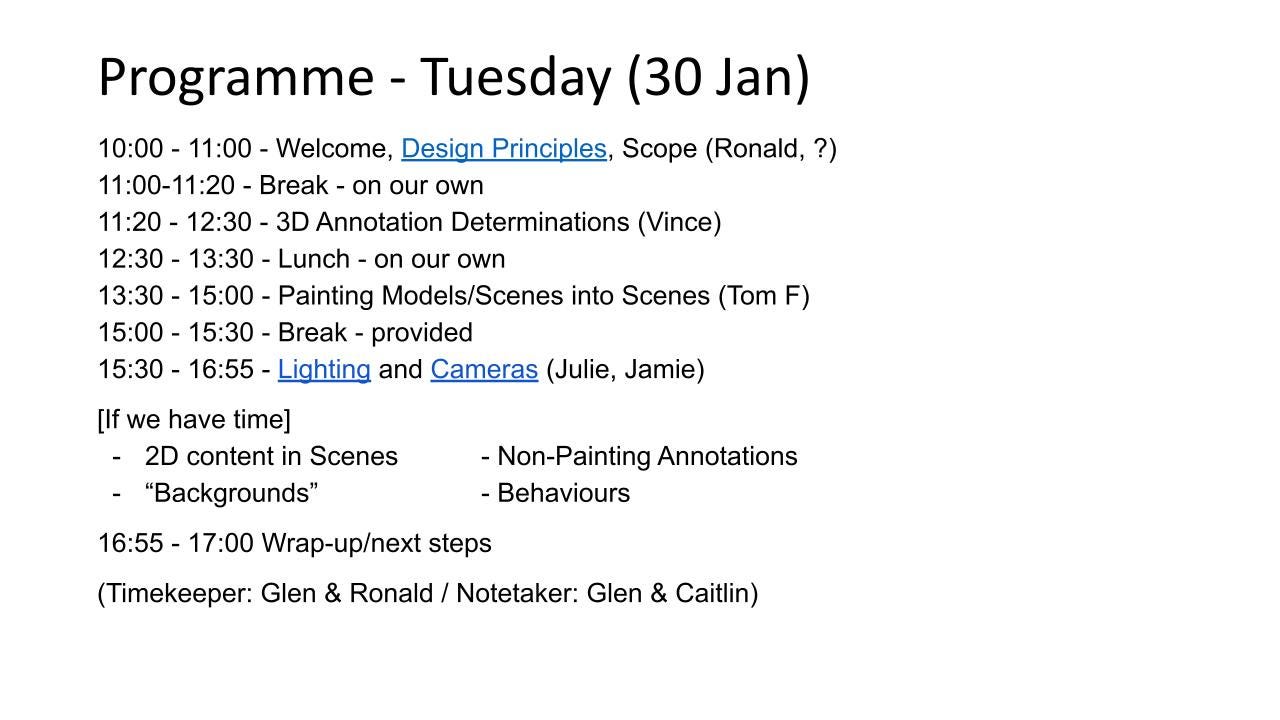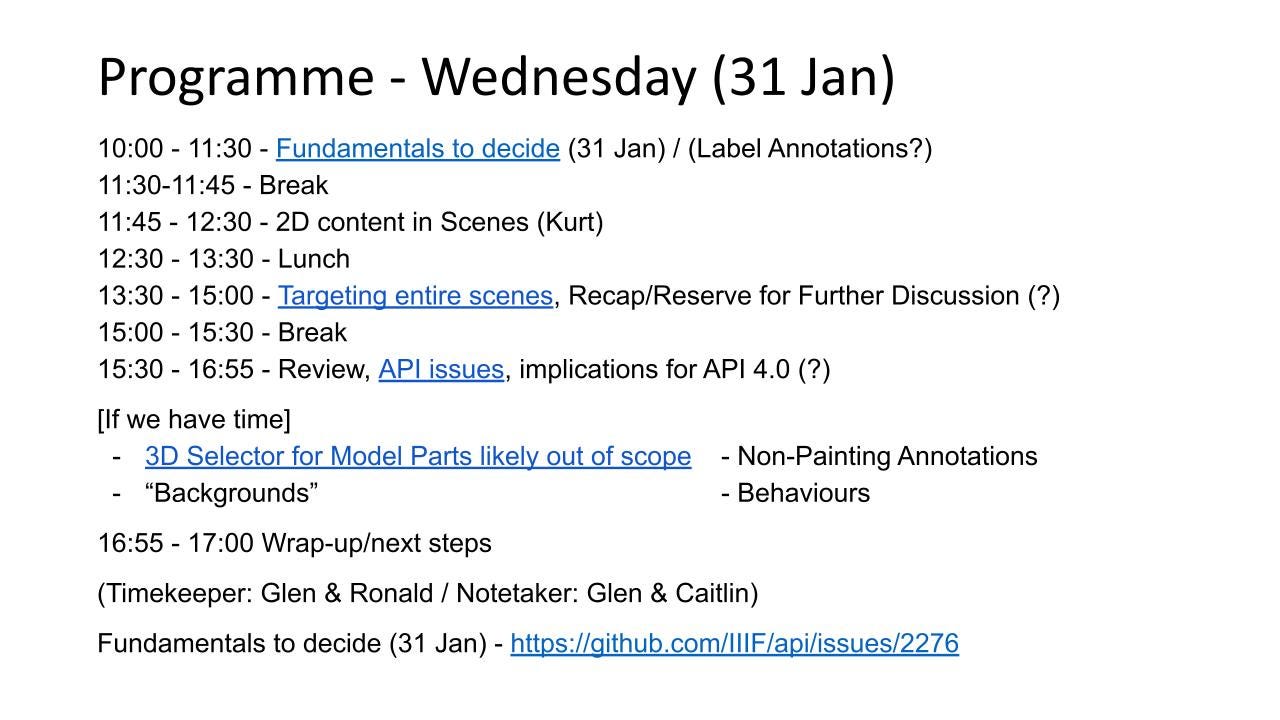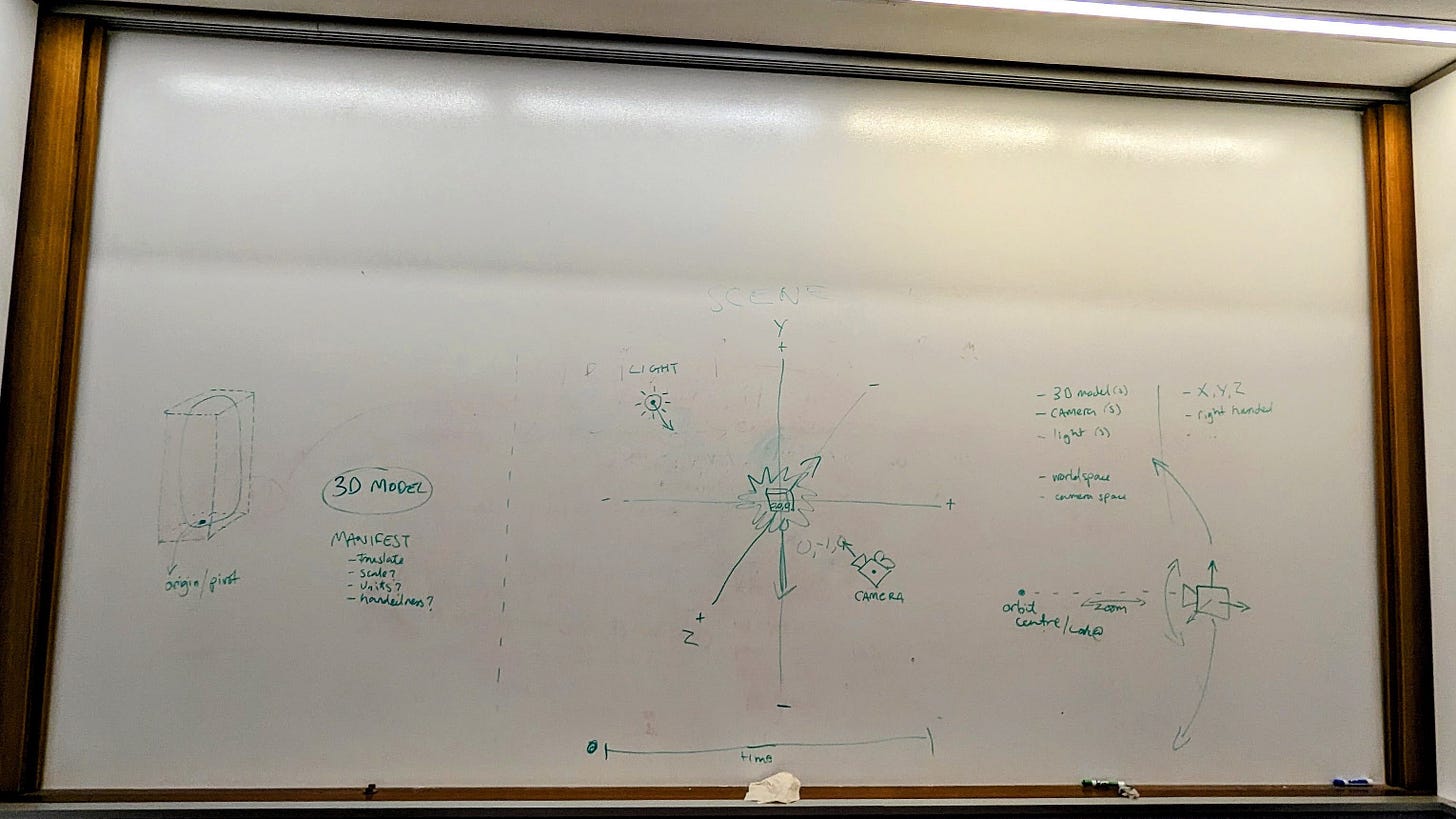IIIF 3D Summit, January '24
Some thoughts on interoperable 3D data during a trip to Washington DC.
[29.01.2024] The folks at IIIF were kind enough to invite me to an in person get together of the IIIF 3D Technical Specification Group in Washington DC this week. Even better for someone like me who works independently in the GLAM sector, and with the help of the Kress Foundation, they were able to help defray some of the expense of the trip - I am truly grateful!
🙋♂️ What I write below are my own thoughts and opinions and should not be considered in any way affiliated with the IIIF organisation or anyone else attending the event.
What is IIIF?
For those not already familiar with IIIF, the acronym stands for International Image Interoperability Framework. In their own words:
IIIF is a set of open standards for delivering high-quality, attributed digital objects online at scale. It’s also an international community developing and implementing the IIIF APIs. IIIF is backed by a consortium of leading cultural institutions.
I won’t go into details here as they do a great job of explaining themselves already, and for anyone less interested in the technicalities I suggest you just head straight for their demos page to wrap your head around what IIIF enables with regards to images, audio visual, and text content.
The “Go beyond research” section on the demos page is my favourite, esp. the Animal Crossing Art Generator from the Getty:

But I digress. Right now (I’m typing this intro from a Heathrow departure lounge) I am headed to meet some eminently clever folk to talk practicalities regarding the building the IIIF standards to facilitate better sharing of 3D data in the GLAM sector.
I’ve been involved with IIIF and 3D for some time, contributing to the Community Group as a member, and for a couple of years as a co-chair while I was also Cultural Heritage Lead at Sketchfab.
Back in 2018/19, the 3D group was only recently established and my main goal as a co-chair was to bring in as many people to the community group as possible to share their experiences with 3D digitisation and publishing of cultural content. Lots of big name and national level organisations were already joining regular calls, so I made a point of encouraging staff from smaller organisations to log on, listen in or share their own experiences. Community calls still happen on a monthly basis, and they continue to be a friendly and informal place to share projects, ideas, and aspirations related to cultural heritage 3D digitisation and publishing projects. If you work in the GLAM sector and are interested in these topics, I really recommend you consider joining the IIIF 3D Community Group for the monthly calls and Slack chat.
One goal of the community group is to build up a set of user stories to help inform future IIIF activities, and I and the other co-chairs were keen to have as diverse a suite of stories as we were able to muster.
Fast forward a few years and the work of the 3D group has laid the foundation for the establishment of a technical group that will begin the not insignificant task of sketching out plans for the technical implementation of practical standards of interoperability, based in no small way on those user stories.
Through regular online and in person meetings, the Technical Specification Group brings into focus the technical standards (and work) required for to offer and implement a minimum viable version of interoperable 3D on the web.
This week is when one of those in person meetings happen, with experts from international GLAM organisations and academic institutions—and me!—in attendance.
The Washington Summit
[06.02.2024] Attendees of the summit held all kinds of expertise: digitisation, 3D file formats, 3D viewer software, library and university research, IIIF, user experience.
Before the event we had agreed on the 2 day agenda, based largely on previous group sessions held in Basel and Naples. The main goal of the session was to reach agreement on what to include in an initial draft of the IIIF 3D scene specification.
If that' looks like a lot to cover in two days, I can tell you indeed it was! However we had some great volunteer facilitators to shimmy proceedings along for each session. There were plenty of adventures off into the weeds along the way and, although there were a lot of varying opinions, I think we did pretty well in balancing input from a group of 3D and user experts with the requirements set out by the IIIF experts in attendance.
Existing IIIF specifications for 2D rely on the concept of a ‘canvas’ into/onto which image, audio, video and other information can be ‘annotated’. For 3D data, the concept of a 2D ‘canvas’ was a good start, but out of necessity has been superseded by a new concept, a 3D ‘scene’ into which 3D and all other IIIF ready data can be annotated. One main goal of our meeting was to define the bare minimum elements that will define a ‘scene’.
The basics of a common implementation :
A defined, but infinite, 3D space
3D models
Cameras
Lights
We were guided during our discussions in part by the existing user stories, but also the IIIF Design Principles. One of the oft repeated principles during the event was “Select Solutions That Are as Simple as Possible and No Simpler” which, in part, leads to a necessity of deferring responsibility to different people involved in the publishing of 3D data online:
Some things are the responsibility of the IIIF specification.
Some things are the responsibility of the 3D data providers.
Some things are the responsibility of the 3D viewer developers.
Getting the activities of all of the above groups to align or overlap as much as possible is a foundation of the digital interoperability I think we’re aiming for. It’s a lofty goal and however hard it might be to achieve, I think that interoperable 3D holds a lot of promise when it comes to helping being access and engage with cultural and heritage content.

What I learned
Before the event, I spent a lot of time reviewing my understanding of existing IIIF concepts, and marrying these up with my experience with producers and end users working with 3D in the GLAM space. Attending gave me a lot to think about and some takeaways for me are:
Deciding what to include and exclude in a technical specification is hard. What to include? What to exclude? What about this edge case? What about how this platform has implemented that feature?
To get anywhere, some things just have to be left out / ignored / kicked down the road.
Decisions can often come down to “well, this is how so-and-so does it” and “it’s not perfect, but it’ll do for now”.
The specification will evolve from an initial draft all the way up to it’s release.
More could be done to include a broader and more diverse set of experiences and expertise to the IIIF 3D community.
We should have used the whiteboard and 3D demonstrations more in our discussions - talking only conveys so much when thinking about 3D stuff.

What’s next?
We left the final day of the summit with agreement on what should go into the initial draft proposal of a IIIF ‘scene’ and the IIIF Editors in attendance will spend a few more days setting down the outcomes of our discussion into a proposal. Their work will be presented at an upcoming 3D Technical Specification Group call, and an update made to the 3D Community Group as well.
The release of a IIIF 3D specification is a long way off, but I think we did well to push things along in the right direction!
If you want to get involved in the process, I heartily suggest that check out the 3D Group Community, and consider joining a future call!







